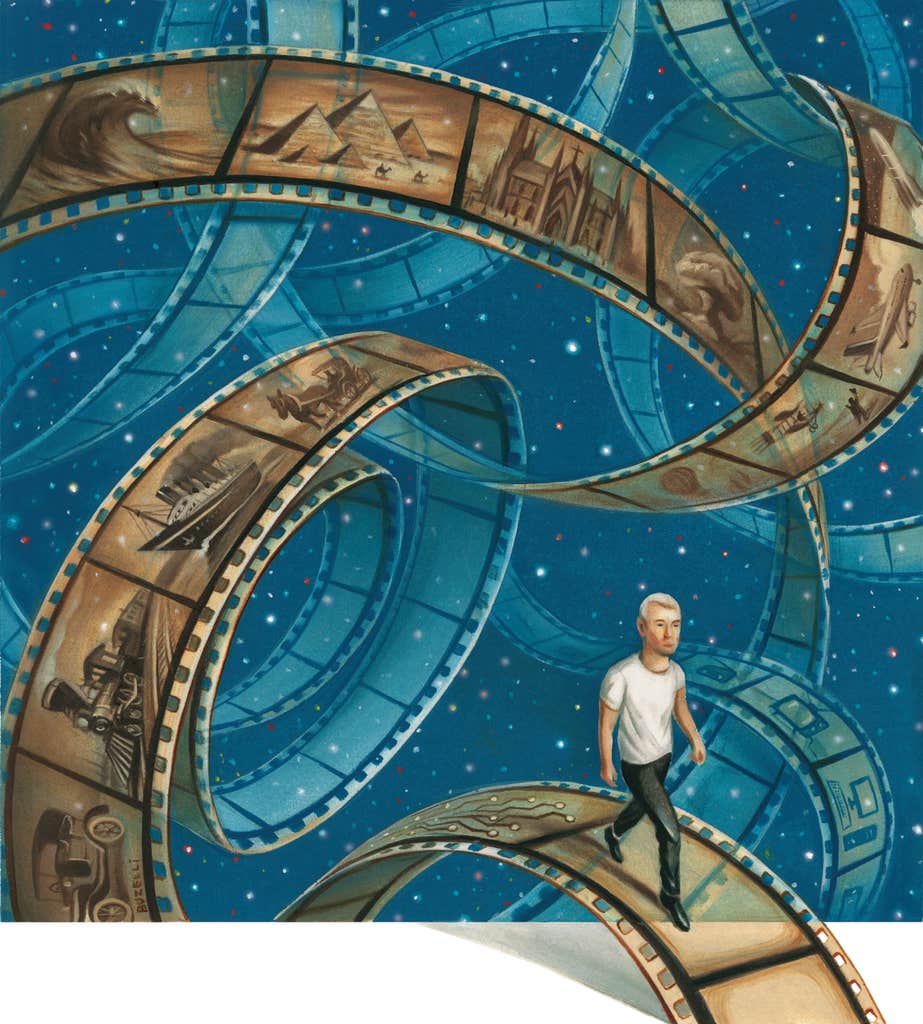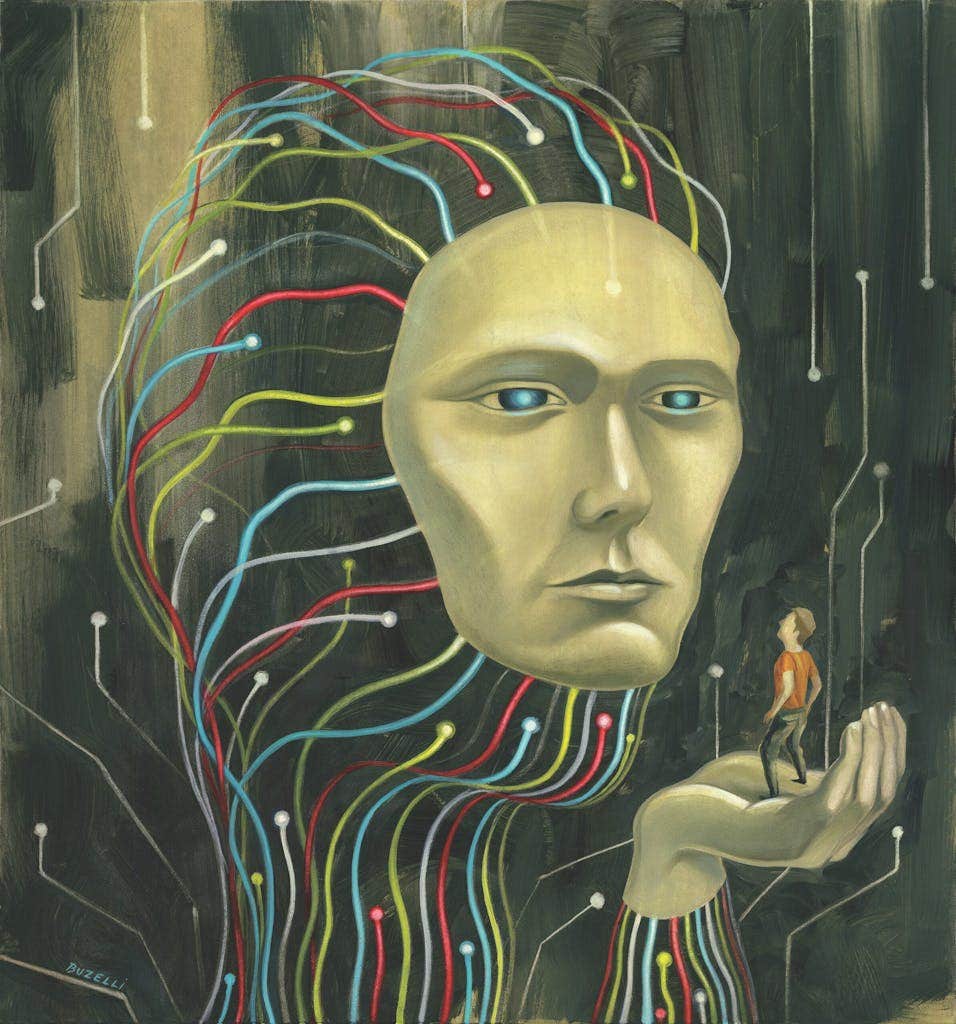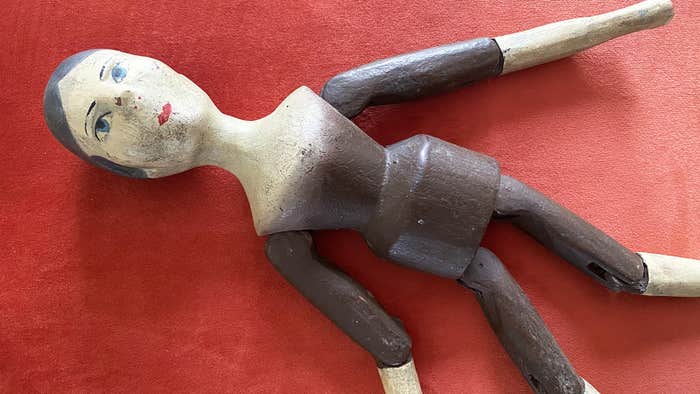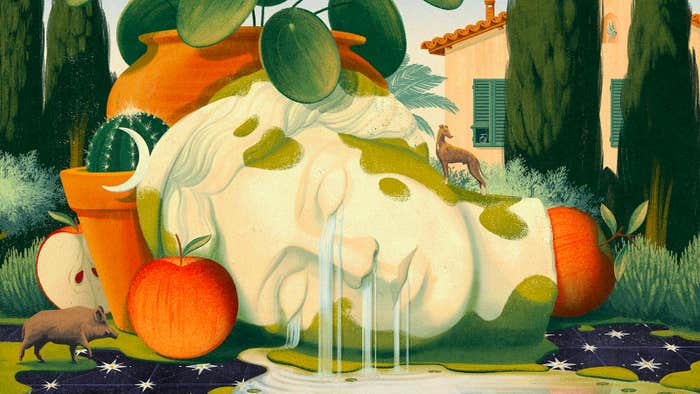
This article is part of series of Nautilus interviews with artists, you can read the rest here.
Chris Buzelli started painting when he was a boy watching the Bill Alexander show The Magic of Oil Painting in his grandfather’s Chicago television repair shop. Now based in New York, Buzelli’s illustrations have appeared in Vanity Fair, Rolling Stone, The New York Times, and Nautilus. In fact, if you’re a regular Nautilus reader, you’ll recognize Buzelli’s surreal style from a number of our covers. We recently caught up with him to ask about his career path, why he prefers working with physical media, and his thoughts on AI and art.
How did you decide pursuing art was the path you wanted to take?
Well I’m not sure if or when I officially decided but it felt like it was the only path for me. I started oil painting as a kid in my grandfather’s television repair shop. So I guess the choices were to become a television repairman (now extinct) or an artist. Luckily I had a few people nudge me in the right direction along the way.
By working in oil paints instead of digitally, you stand apart from a lot of other illustrators. Why do you prefer oils?
I’m much quicker and more proficient at painting with oils than pushing pixels around. And I have the added bonus of a physical painting at the end of each illustration project which sometimes gets sold at a gallery or directly to a collector.
How do you know when a project is finished?
I could probably work and overwork a painting to death but luckily most illustration projects have short deadlines. I can usually tell when a piece is finished if the concept is clear and I’m satisfied with the execution. Or I ask my wife!

You created the illustration for Walter Murch’s cover story in Nautilus Issue 56 about bursts of creativity and innovation throughout history, particularly in film. As a creative person yourself, what about that story captured your imagination?
It’s rare that a story truly sparks my interests, but fortunately this one did. I loved how the author paralleled great achievements of history and achievements of film. The part about how we are “simply being carried like foam on the waves of history … agents of the great unraveling of time and space” really struck a chord with me and was the main driving force for the cover illustration.
The rise of generative AI services is causing some controversy in the art world. What are your thoughts on the use of AI to create art?
Who knows? When I first started out as an illustrator, many professors and professional illustrators said it was the “end of illustration” mostly because print was transitioning to web, cheap stock art had begun, and illustration budgets were stagnant. These factors forced me to slightly adjust and change and maybe progress in many ways to survive in the industry. I think the same is happening with AI and art now. It will definitely have a great effect on the industry but I don’t think it will be the end.

The United States Postal Service selected you to design two forever stamps, what was the process like?
The process included many months of back and forth with the USPS design team on the conceptual direction for the Forever Love stamps. Then once we decided on the Puppy Love and Kitty Love stamp, it was a few more months of final sketches, color options, and then the final paintings. I still get blown away when I see my stamps at my local post office.
You’ve done several memorable covers for Nautilus. Do you have a favorite?
I have to say the Fall 2014 cover “Face of Things to Come” about AI and the singularity really stands out because it was my first and the topic of AI exceeding human intelligence seems to be taking place now.

Interview by Jake Currie.
Lead image courtesy of Chris Buzelli.































